is street photography an art form or an invasion of privacy?
Don't wanna be here? Send us removal request.
Text
Following a Street Photographer In-Action
I found a video online that allows the viewer to follow a street photographer as kind of a day in the life.
youtube
Youtuber Hayden Pederson is a self-proclaimed street photographer and vlogger that films his excursions to different cities. In this video, he is in New York City taking photos of the street life. Pederson displays his photos at the end of the video breaking down the composition and how he was able to achieve each photo. Throughout the video, he is very respectful of many of the people he encounters and doesn’t try to get into their face or disguises himself as a tourist as many articles have suggested doing.
This is just a small nugget of street photography for those that may be interested in trying their hand at it. If anyone is interested, there are millions and millions of videos, whether you’re interested in vlogs (following someone around, sort of day-in-the-life type of deal) or how-to videos. Some of the how-to videos may just be different techniques out on the field and others might be more for the editing process. Either way, there is a myriad of resources on the free web.
0 notes
Text
Straight from the Source
The best way to develop an opinion of your own about whether or not street photography is an invasion of privacy or a work of art is to analyze photographs from renowned street photographers, both historical and contemporary. You can accomplish this by one simple Google search. So, curious, I decided to look at both historical and contemporary and see how the art form might have evolved.
Some historical examples:

Source
I personally thought that this image was captivating. It raised a few questions for me. What is the spatter on the ground? Water? Blood? Why is that man hunched over the fire hydrant? Is he fixing it or is her hurt? Or, more generally, what is happening in this moment that compelled the photographer to photograph it? Photographed by “stealth photographer.”

Source
I just thought this photograph was interesting because they were able to capture the bird flying into frame at just the right moment. Was it a happy accident or a conscious photograph? Either way, it makes for an interesting photo. Raj Sarkar, street photographer

Source
This photograph has been and will most likely remain my favorite photograph. Photographer Garry Winogrand photographed some higher society women out on the town shopping. At face value, the photo is beautiful, the way the sun beams on the ground and contrast between light and shadow is fantastic. But as you continue to look at this photo, one will notice that there is a crippled man hunched over on the left. The women are all looking at him, and one can assume that they walked by, as if they never saw anything. There are also a bunch of people sitting on a park bench. All of them are African American. The little boy is also curious, looking at the crippled man. Winogrand was able to successfully capture a controversial photograph of the time.
Some contemporary examples:

Source
This one also has me asking a few questions. This is from contemporary photographer, DirtyHarrrry and he titled this photo “WARN'D IN VAIN.” Why did he choose that title? Why are the people depicted wearing ski masks? What is happening? These questions are what makes art interesting.

Source
This is a photograph from Donato di Camillo. It’s from a collection he calls Fringe. He describes this collection with the following words: “Like many of my photographs, these photos represent slices of humanity seemingly living without filters. In most cases they’ve become comfortable in what others may say are outside the norm.” Which leads me to my next photographer:
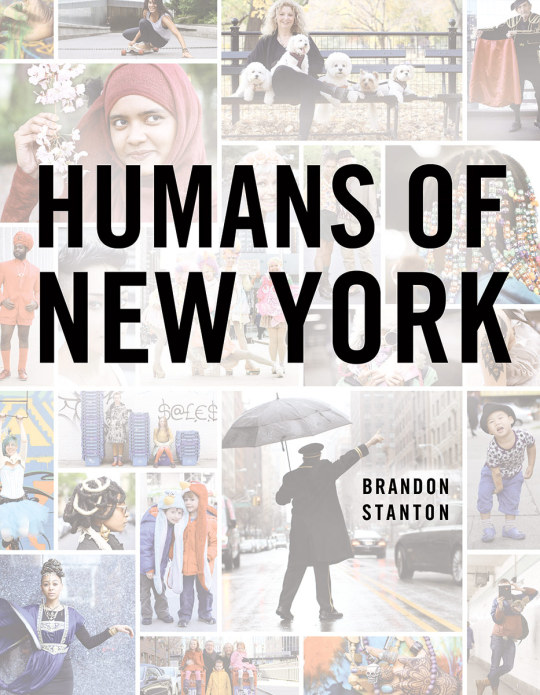
Source
Many photographers like Donato di Camillo (above) and Brandon Stanton (Humans of New York photographer) are redefining street photography. Instead of taking candid photos of people, they are taking portrait shots of people. Stanton actually takes photos of people and interviews them to catch a glimpse into their life. It’s a new, raw form of street photography, were people get to voice their truth. If you’re interested in this, Brandon Stanton published many books and actually has a website and an Instagram.
All of these photographers also have an eye for what is visually interesting. Whether they studied basic aesthetics or not, they were able to successfully master some of the artistic compositions in their photography. Some may follow the basic rule of thirds, which is a very simple and beginner form of composition. But, there are a few other forms that may be a little more intriguing to the viewer.
Many photographs that I have found have followed triangle composition. This is one of the best-known compositions in photography that guides the eye throughout a two-dimensional space. Some examples may include:
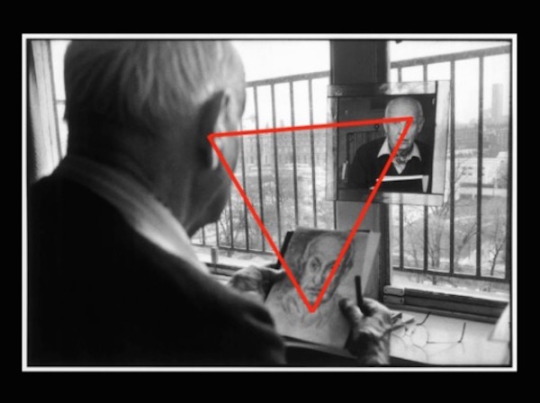
Source

Source

Source
Some other forms of composition is dynamic symmetry. According to Larmon Studios, “dynamic Symmetry is an armature which is geometrically designed to promote continuity, flow, rhythm and balance within artistic design.” Photographer Henri Cartier-Bresson was very well-known for using this type of composition to captivate the viewer. Some examples may include:

Source

Source

Source
I firmly stand by street photography and believe that it is one of the most influential forms of art. The art itself is very raw and natural and can serve as a timepiece. Photographers aim to capture those moments in human life and looking back on these photos is just a beautiful thing to experience. I’ve found that I am able to empathize with people depicted or I begin to wonder what he or she might have been thinking or going through the moment their image was captured. For me, I think looking through these photos is a humanizing experience, which is what art is intended for.
0 notes
Text
Street Shootings: Covert Photography and Public Privacy
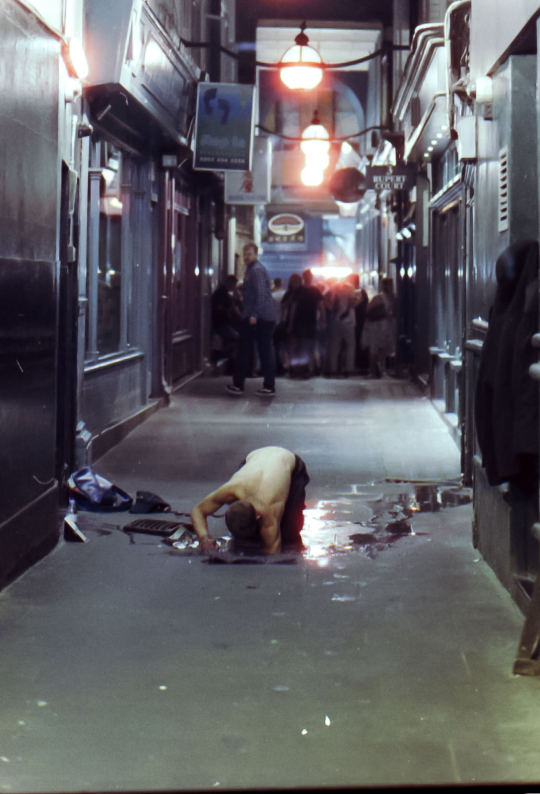
Source
Article: “Street Shootings: Covert Photography and Public Privacy”
Review: Vanderbilt Law Review: Volume 63, Issue 4
Author: Nancy Danforth Zeronda
Published: May 2010
I decided dive into an academic article regarding the privacy aspects of street photography. The article I found was written by Nancy Danforth Zeronda entitled “Street Shootings: Covert Photography and Public Privacy.” My immediate reaction to the title was how I thought there was a bit of humor behind the words public and privacy. To me, public and privacy seems a little contradictory, but I thought that maybe it was a conscious decision by the author to be a little satirical in her selection of words for the title. But, as I read on, I noticed that Zeronda’s stance on the subject was for the privacy of the general public.
Her immediate use of of words describing photographers carried a negative connotation: shootings, hunt, stealth, shooter, prey. She was antagonizing street photographers with the intentional use of those words. “Street photographers, like snipers, pride themselves on stealth. Camouflaged in nondescript clothing, they wander the streets undetectable, armed and on the hunt. When they find their mark, they act quickly… While methods of “trapping prey” vary from shooter to shooter, the mission remains the same- staying as covert as possible and catching an unknowing subject in a candid pose.”
This is what I immediately visualized when reading the academic article:

Source
Zeronda also details how with modern technology, photographers are granted easier access to more discreet “weapons” that allows them to snap photos of people stealthily. This enables the perversion of many, targeting women and photographing them in a vulnerable state. Within the first three pages of the article, Zeronda discusses the mental suffering, shame and humiliation many women have felt being the subjects of up-skirt photography. (Up-skirt photography is literally a form of photography where people take scandalous photos underneath a woman’s dress or skirt without the consent of the woman.) In fact, there is actually such a demand for up-skirt photography, there are hundreds of websites online dedicated to this genre of photography.
The Right to Privacy has been a long-debated subject in photography. Many jurists have recognized the rights to privacy, yet, “tort law has proved ineffectual at protecting an individual’s public right to privacy in photography cases.” Why? The first amendment protects one’s freedom of speech, religion, assembly, press, and a right to petition. Essentially, the first amendment protects any newsworthy photographs. According to Dean Prosser, these photographs “arises out of the desire and the right of the public to know what is going on in the world, and the freedom of the press and other agencies of information to tell them.” Courts do also often do explain that an individual may lose his or her “reasonable expectation” of privacy the moment that they enter a public space. It is, however very difficult to distinguish public and private spaces, as many street photographers, both contemporary and historical, have taken photos from a public space of private spheres. The line drawn here is a little fuzzy and isn’t plain black and white.
Zeronda discusses a much more serious scenario or street photography: hunter and the prey. Before, whenever I thought about street photography, I thought of it as being more a form of art, I never really saw it as an invitation to perversion. This article shed light onto the fact that street photography can in fact, be both a form of art and an invasion of privacy, depending on the situation. As people know, art has been known to be controversial at times, but where does one draw the line between an artistic statement and just plain deviance?

Source
0 notes
Text
Bystander: A History of Street Photography
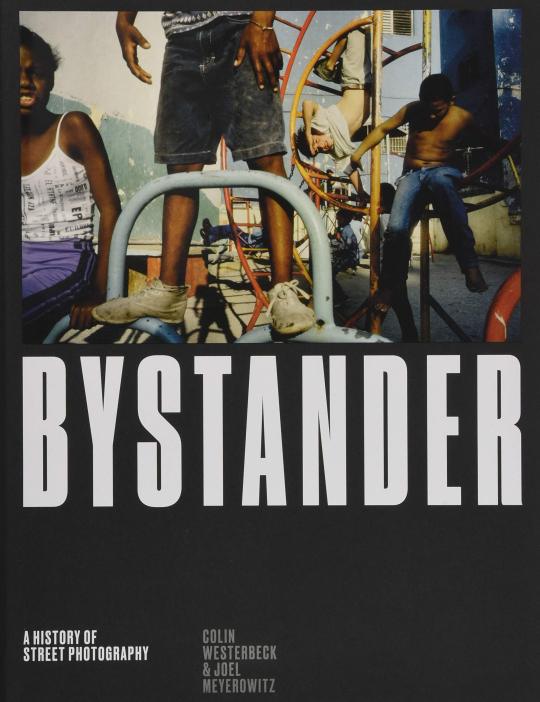
Source
Title: Bystander: A History of Street Photography
Author: Colin Westerbeck and Joel Meyerowitz
Publisher: Laurence King Publishing
Published: 1994 (updated version published in 2017)
I recently dove into an anthology written by Colin Westerbeck and Joel Meyerowitz about the history of street photography. Colin Westerbeck is a writer and has written many books on photography, such as A Democracy of Imagery and Chuck Close: Photographer. He was also a curator at the Art Institute of Chicago for photography. Joel Meyerowitz is a renowned street and landscape photographer influenced by photographers such as Robert Frank and Henri Cartier-Bresson.
The book not only laid out the rich history behind the art, but provided a beautiful array of photographs through the years. The authors investigated the evolution of perhaps one of the most zestful and imaginative forms of photography in history.
They arranged the book in chronological order, originally starting with photographers from the 19th century. They delve into the works of both American and European photographers and display their photos beautifully.
One thing I noticed in the book is that the majority of the photos featured in the book are primarily in color. They do, however, focus on photographer Robert Frank and his compilation of photos called The Americans. Many of his photos were printed in black and white, and personally, I think that there’s a mysterious nuance to black and white photos that you typically do not see in color photos. Robert Frank was a street photographer from the 1950’s that has some truly interesting work. He focused on capturing American society and the political heat. The composition of his pieces were truly interesting to me.

Source
Looking at the book now, seeing photography capturing life in the 19th and 20th centuries is still fascinating to people today, despite the technology boom we all lived through. Everyone has a smartphone, the power to photograph is in the hands of every individual out there now. But finding someone that has the eye to photograph the momentary points in day-to-day life is still very current and captivating. The works of these photographers simply hold a mirror to what reality was in the past.
The one criticism I do have is that the book is 430 pages of dense analysis. In my opinion, words are necessary to explain the historical significance these photographers and their works contain, but everyone knows the phrase “a picture is worth a thousand words.” Many of the photos could stand alone with the power that they hold. Although Meyerowitz and Westerbeck have a scholarly tone when studying the works, a lot of the text could have been simplified.
Overall, I think the book is a powerful handbook that informs the reader of the historical influence the photography has had on European and American societies. Many critics have called the book the Bible for those interested in photography and, like the Bible, it is a dense stack of text and photography. I could stand by that remark.
0 notes
Text
Know Your Rights as a Public Photographer
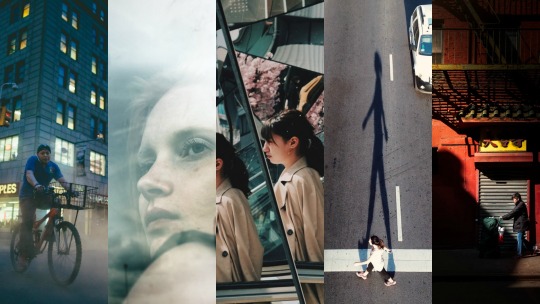
Source
The line between being a form of art and an invasion of privacy is a little fuzzy when it comes to street photography. It’s a candid form and most people being photographed are unaware that they are the subject of a photo. Most people being photographed without consent feel that it’s a violation of their privacy, but because the photographers are on public domain, they are legally able to snap photos of people without their consent. However, street photographers should be fully aware of their rights before going out and snapping photos.
It is completely legal to take photos of people in public places.
- The general public pays taxes for the public domain. Their soul purpose is to be utilized by the public.
- This even permits the photographer to photograph privately owned properties and spaces, as long as the photo is taken in the public forum.
- All street photographers must be aware of their surroundings and all of the rules in the properties they enter. For example, amusement parks, airplanes, shopping malls, and theatres are all privately owned spaces. They may have their own set of rules and regulations all guests are legally obligated to follow.
- It’s wise for street photographers to protect themselves by doing their research and getting into contact with the people in charge.
2) You do not need any model releases for the recognizable people in your photos.
- Model releases are written contracts between the photographer and the subject of the photo. They break down the photographer’s intent with the photographs and what’s to happen when the agreement is not met.
- When photographing people, you do not even need expressed consent, even with law enforcement and children, as long as you are on public domain.
3) There are some restrictions placed on photographers, depending on their environment.
- Some places forbid the use of the flash or tripods. This is used as a preventative so that photographers aren’t using it for advertisement.
- Some places also require a permit if your work is interrupting the natural flow of people and traffic. This is not only for safety, but also for disruption.
- You also must be weary of heavily trafficked areas and historical sites.
- Also, keep in mind that most of these rules only apply to areas in the United States. For photographers traveling abroad, it is crucial to check up on the laws of public photography to ensure that you won’t be running into any sort of trouble in the future.
4) Be sure that you have the right to approach people and snap photos before you do so.
- If you are out and about photographing people, be prepared that people may approach you and ask what you’re doing, why you’re doing it, and in some cases, to remove or delete any photos of them. Don’t worry. Be sure to tell them what your intentions are with the photographs you took.
- If any law enforcement officers come and talk to you about the photographs, listen to everything they instruct you to do. Even if your intentions are to simply capture daily life, they are only asking to ensure the safety and well-being of the general public. You must respect that.
5) There may also be rules on the displaying and selling of your photography.
- In the United States, you are legally allowed to display your photographs without the permission from the subjects featured in your photography. After all, they are your photographs to do with what you wish.
- If and only if you are using the photographs for advertisement purposes, you will need model releases from those individuals.
- However, some of the buildings and structures in the background of your images may be protected under copyright. If some of the personal or private spaces are photographed, you may not be able to display these images without written permission from the owners. This is known as the Freedom of Panorama.
These are the five main things each street photographer must consider to protect themselves from anything. Also, bear in mind that those traveling and photographing should research the rules and regulations in the area or country you are in. If you’re considering trying your hand at it, it is crucial to keep these things in mind to respect your environment and those in it. It is truly a beautiful art and I encourage everyone to try it at least once. It throws you outside of your comfort zone and you might even find some beauty in the fleeting moments of daily life.

Source
0 notes
Text
Opinion-Based Articles
I wanted to find some opinionated articles written about street photography to shed light on the contrasting views on the topic. The two that I found are Why Street Photography is Good For You and Why is Street Photography So Contentious? Both have an interesting, yet opinionated argument on the topic.
Title: Why Street Photography is Good For You
Author: Sebastian
Publishing Date: unknown

Source
The website, Street Bounty contains carefully compiled articles about street photography, photojournalism, travel-based photography, and equipment and gear needed to do so. This particular article argues that street photography serves as a philosophy for the art. The author believes that street photography is an excellent way for an amateur photographer to familiarize themselves with the camera, and in the process, allows them to develop their own style.
The limitations and uncertainty set on street photography force the photographer to “think outside of the box,” so to speak. Sebastian argues that street photography is one of the hardest forms to master. Capturing an authentic moment without any artist interference is a very difficult thing to do. Photographers are forced to think about composition, story-telling, and authenticity in a matter of seconds to compose a powerful image.
The article also argues that photography within itself is a very frustrating mode of art. Street photographers have never been known for receive any praise or rewards despite the effort a photographer might put into a project. Sebastian points out that although it might be frustrating, it will eventually teach you patience and you’ll develop a high frustration tolerance, which is a very important quality to have, despite the career path one chooses.
Street photography will also enable you to experience travel in a whole new way. Many photographers both past and present utilize the power of blending in to capture those money-making shots. When traveling, Sebastian says that it will allow you to experience the new environment as a local. It may also open up new opportunities for you like meeting new people. It’s also a fantastic way to beef up your portfolio. Sebastian drives this point to people expressing interest in photography.
After reading this article, I can honestly say that I wholeheartedly agree with the title of the piece. I believe that street photography is both good for the viewer and the photographer. It’s art, a way to connect with the viewers and inspiring them pose questions about the photo. It’s also a fantastic way for photographers to get outside of their comfort zone. So, if they’re food photographers or photographers hired by fashion magazine, going out into the street and capturing photos of everyday life forces them to think outside of the box and find new techniques that they can apply to their work and keep their photos fresh and new.
In closing, “street photography gives me the power to pursue newfound passions, discover the world around me and structure it in a form that it makes sense to me. Street Photography is good for you … to enable your curiosity & share your discoveries with the world. It is more than a genre – It is a way of life.“ Sebastian
Title: Why Street Photography is So Contentious
Author: Simon King
Publishing Date: February 27, 2019
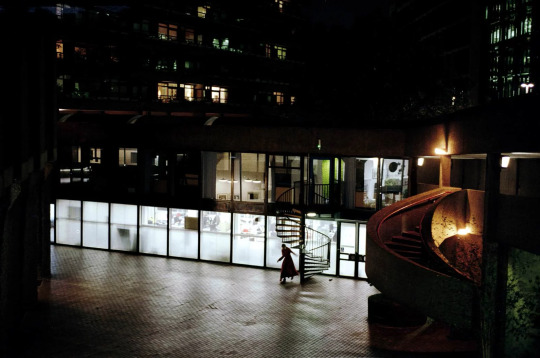
Source
Simon King is a self-titled street photographer and photojournalist. He begins the article by stating that although he proclaims that the art is contentious or controversial, it is his desired interest that he spends the majority of his time pursuing. “I know that photographers and the photography community, in general, is a passionate one and that there is no shortage of critiques available for any work or opinion that creators choose to share. However despite knowing that there is criticism in every area of the art, I still feel that some of the criticisms leveled against street photography as a genre as well as specific examples of street photographs are harsher than any I’ve seen in, for example, landscape, or portraiture.” (Simon King)
His article breaks down the most common criticisms he has gotten on his own photographs: repetition, over-saturation, uninspiring, the incorrect utilization of the term, following trends, breaking the rules, privacy and exploitation, shock value... the list goes on. He writes about these criticisms for people interested in pursuing a photography career.
He also goes into detail of the many behaviorisms of street photographers that have had a negative effect on the term. It has been historically known that photographers used exploitation and shock value to capture heart-wrenching photos which could be perceived as morally unjust. King specifically exemplifies the homeless and believes that refusing to document scenes like such in everyday life is just like turning a cheek from a societal issue and erasing it from society. In other words, pretending a societal issue such as homelessness doesn’t exist is yet another form of arrogance. Although it may be controversial to capture someone in a distressing light, it is also drawing attention to what is truly important in society.
King concludes his article my stating, “I’m aware that everything I’ve discussed here is immensely subjective, and that your experience of street photography and street photography criticism may be entirely different from my own. Art is one of the most subjective topics there is, and art criticism will always be a difficult topic to tackle as an artist. I can only offer my own perspective on these ideas and hope that it helps aspiring photographers in any genre to deal with the way their work is judged and understood by their audience, and by themselves.” (Simon King)
I think that it’s interesting that Simon King has this stance, particularly because he is a photographer himself. While I do think that some street photographers may be a little too aggressive with their approach, I still think that many of these photos that have been produced are very profound. They display the mundane aspects of every day life, yet captures moments in history: how people dressed, what cars they drove, what food they ate, the different types of people, you name it. It’s all in the detail, I think and although King argues that many contemporary photographers aren’t original, I think he is just looking at the wrong artists.
Both articles are based off of opinion and personal experience alone. Although there is a sense of controversy lingering around street photography, people are typically interested in the photos as both an art and perhaps a reflection of reality. Even looking at the discussion boards on each article, people are actively responding to one another and having a discussion about their viewpoints. Some people view it as the cornerstone of all photography: it teaches you a lot through trial and error.
While the first article serves as an optimistic outlook as to how street photography could benefit your art in the future, the second article is written as a cautionary tale of street photography and the many criticisms one could face when approaching the field. Both authors seemed to communicate with one another, King was simply more realistic with the possible problems an up-and-coming photographer might face.
I’m starting to believe that street photography can serve as both a form of art AND an invasion of privacy.
0 notes
Text
“Garry Winogrand: All Things Are Photographable”
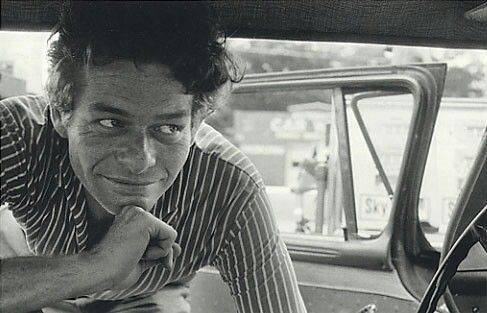
(Garry Winogrand Self Portrait)
I recently watched a documentary about famous street photographer: Garry Winogrand. (1928-1984) Winogrand was a photographer from the Bronx that devoted his life to capturing the “is-ness of things.” His observation of human behavior, activity, gesture and the relationships shared between people ultimately molded photography into the art form it is today.
Below is the trailer to the documentary:
youtube
Director: Sasha Waters Freyer
Produced By: American Masters
With: Geoff Dyer: English writer, Jeffrey Fraenkel: Author and owner of Fraenkel Gallery in San Francisco, Laurie Simmons: American artist, photographer and filmmaker, Matthew Weiner: American writer, producer, director, actor and author, Tod Papageorge: American Photographer, Leo Rubinfien: American photographer and essayist, Susan Kismaric: Curator at the Museum of Modern Art, Jeffrey Henson Scales: Photographer and Instructor at NYU, and Adrienne Lubeau: First wife of Garry Winogrand
Release Date: Sep 19, 2018
Garry Winogrand has always been an artist. At a young age, Winogrand was known to paint, but as soon as he wrapped his hands around a camera, he was never able to put it down. Once he realized that his school offered 24-hour darkroom access, he was hooked.
In the earlier years of his career, Winogrand hoped to work as a freelancer in Life and Look Magazines. He started his photography career as an illustrator for written texts for various magazines. However, being an illustrator forced him to conform to the written text, ultimately stripping his photography of the uncertainty, poetry, and ambiguity it had to offer.
So, during his unemployed days, Winogrand would go out and photograph city life and saw the potential that photography truly had to be an art. He started developing independent and personal goals with photography and began developing a style of candid portraiture. Many of the photographers featured in the documentary had described his work as mysterious, loose, messy, vulnerable, speculative and spontaneous.
The film revealed that Winogrand was influenced by Dan Weiner, an American photojournalist. Weiner also enjoyed capturing the fleeting moments of human life in the public landscape, which inspired the work of Winogrand. Weiner died unexpectedly in 1959 in a plane crash that drove Winogrand’s series of photographs taken in airports. Winogrand grew superstitious and began to snap photos of people in the airports before every flight he took. His main subject in this series were of people carrying lots of luggage.
Winogrand continued to photograph in public every day. His work began getting noticed by museum curators like John Szarkowski, the Director of Photography at the Museum of Modern Art. Szarkowski was intrigued by Winogrand’s work because he didn’t care about the shows or the “notion of being an artist.” He just truly enjoyed going out and photographing life. Soon enough, Winogrand’s work started getting featured in galleries and more magazines. In May of 1963, Szarkowski created a gallery featuring four other photographers called “Five Unrelated Photographers.”
In the film, his son read Winogrand’s Guggenheim Application essay. It read, “I have been photographing the United States. Trying by investigating photographically to learn who we are and how we feel by seeing what we look like as history has been and is happening to us in this world. Since World War II, we have seen the spread of affluence the move to the suburbs and the spreading of them, the massive shopping centers to serve them , cars to and from. New schools, churches and banks, and the growing need of tranquilizer peace, missile races, H-bomb for overkill war and peace tensions and bomb shelter security. And since the Supreme Court decision to desegregate schools, we have the acceleration of civil liberties battle by Negros. I look at the pictures I have done up to now and they make me feel that who we are and how we feel and what is to become of us just doesn’t matter. Our aspirations and successes have been cheap and petty. I read the newspapers, the columnists, some books and I look at some magazines, our press. They all deal in illusions and fantasies. I can only conclude that we have lost ourselves and the bomb may finish the job permanently and it just doesn’t matter. We have not loved life. I cannot accept my conclusions and so I must continue this photographic investigation further and deeper. This is my project.”
In his short life of 56 years, The Garry Winogrand Archive at the Center for Creative Photography estimates to have over 20,000 independent prints, 20,000 contact sheets, 30,500 35 mm color slides and 100,000 negatives. Winogrand was never into the fame and the fortune his photographs may have brought. His photographs illustrated a portrait of America, and he was always hungry for the truth, whatever the truth may be.
After watching this documentary, I was truly amazed with some of Winogrand’s photos. He truly had an eye for the visually interesting, keeping composition in mind and was very thoughtful in selecting his subjects. Many of his photographs were also considered to be controversial, which I think is interesting. He played with racial issues, the social hierarchy, gender and the woman’s place, and, in some cases, children. I think art, whether it’s drawing and paintings, sculpture or photography, should produce some sort of emotion. While his work is controversial, discomfort is part of human emotion and the fact that he’s able to draw that type of emotion from his work proves that he was a successful photographer.
Winogrand’s Photography (all featured in documentary):

Source
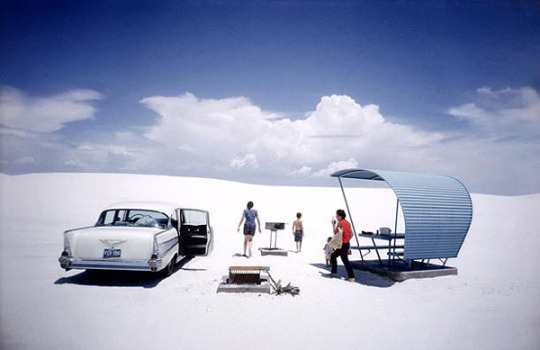
Source
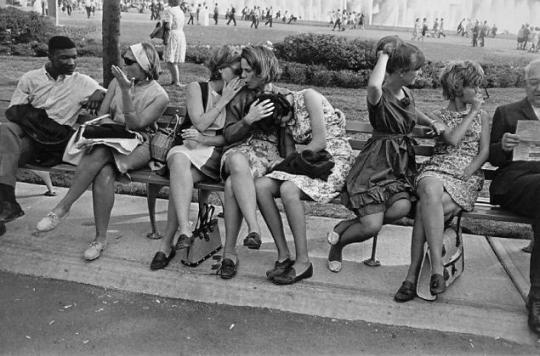
Source

Source
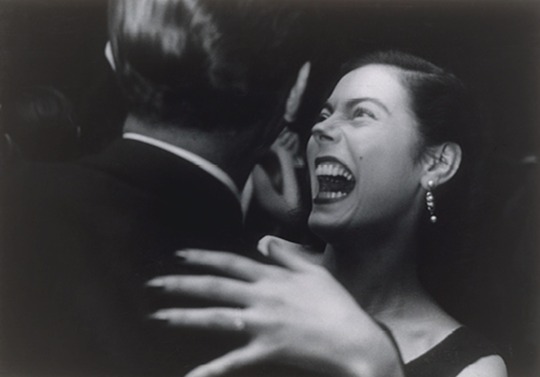
Source

Source
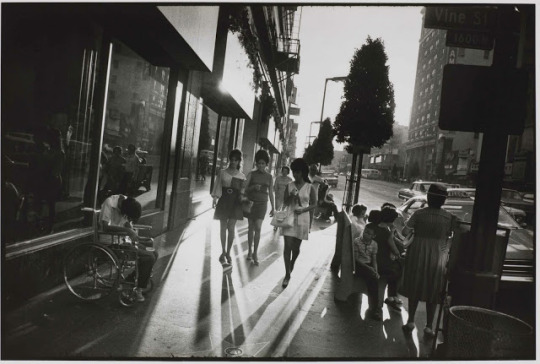
Source

Source

Source

Source
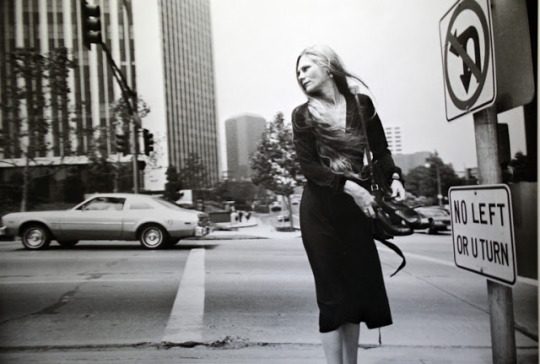
Source
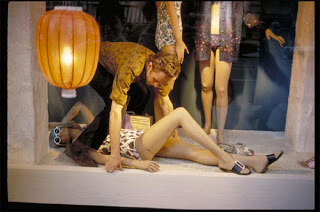
Source
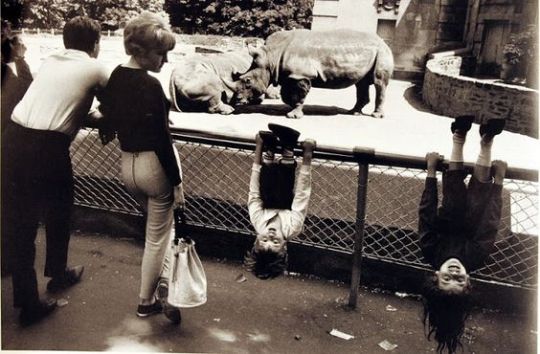
Source
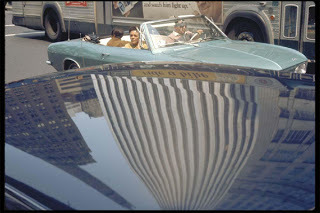
Source
2 notes
·
View notes
Text
Meeting with a Library Liaison
I met up with one of the resources provided at Kutztown University: a library liaison. The meeting was brief, but he was able to steer me in the right direction as to what databases I should be using and what sources I could find for legitimate information.
A few databases and resources that were suggested were obvious, like The New York Times Historical, The Art Full Text Retrospective, JSTOR and the Museum of Modern Art. These sources and databases contain many articles regarding art and the art world. I’m probably the most excited about the Museum of Modern Art, simply because they have had exhibitions in the past featuring street photographers and their work. It would be an interesting source to delve into to get to the bottom of how the exhibitions were interpreted in the public eye and to determine if the artists were successful in gathering interest or if there were any underlying psychological gestures in their work.
There were a few databases and resources that I simply didn’t know about. There are a few legal databases such as Hein Online and Nexis Uni that will provide information about the legality behind street photography. I’ll essentially get a closer look into the morality and ethics behind the art and ultimately develop a more well-rounded outlook and opinion about it.
He also mentioned some media and psychological databases like Kanopy and Films on Demand for documentaries about street photographers. The Philosopher’s Index, he mentioned, tends to surprise researchers with some interesting resources, so I’m excited to see what these databases have to offer.
I mentioned to the library liaison that I was also interested in looking at both historical and contemporary street photographers to see if I could observe any differences or similarities between the two and see if there are any contemporary photographers that are perhaps redefining what street photography is truly about.
This meeting did also raise a few unanswered questions for me. Could street photography be interpreted as a perverted act if the targeted subject in their work is a child or is displayed in a demeaning manner? Or are there any laws protecting these street photographers that are protected from facing any litigations because their work is photographed in public spaces?
0 notes
Text
Trying My Hand at Street Photography
Before I dive into the research, I thought that I would go out and try my hand in street photography. So, I lugged my camera with me on school and family outings to New York, Philly, and some other locations along the way. I gotta say, it was a little odd taking candid photos of complete strangers. I guess the only time I’ve ever taken candid photos were of my friends on Snapchat, but those are never the most flattering or artistic photos.
So below, you will see some of the photos I captured of city life. Some of them are more compositionally pleasing than others, but I found it difficult, at least for me, to get close enough to people to capture those specific moments. I mean, don’t get me wrong, I did "freeze time” by pressing that shutter button, but I don’t think all of them were moments worth capturing. Some of the photos are simply mundane aspects of life.
After researching a bit, I do want to try and get out there again, try to capture those special moments all of the professional street photographers seem to capture. I think it’ll be a difficult hurdle to jump, but I’m up for the challenge.
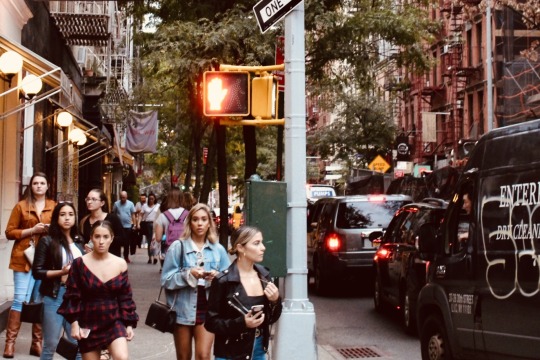



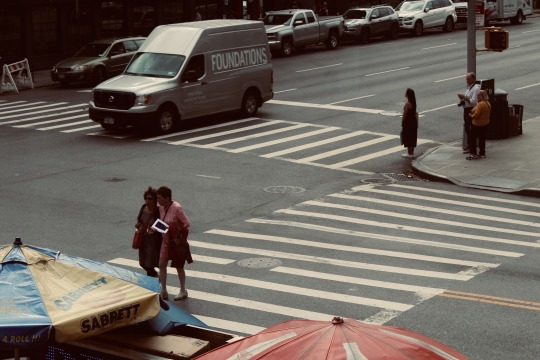
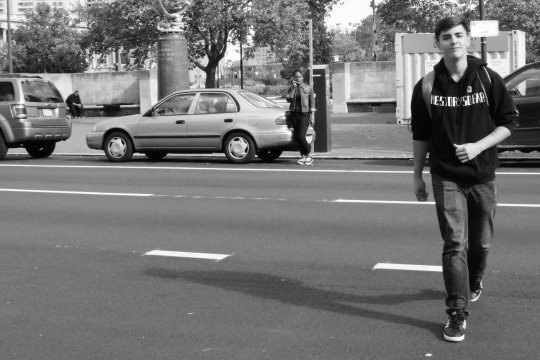
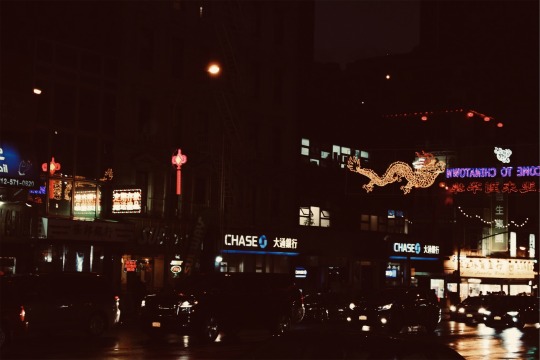




0 notes
Text
Street Photography: A form of art or an invasion of privacy?
It was only recently when I started researching photography as an art. I’ve always had an interest in art, and it was only recently when I started getting into street photography. I used to think that it was just another casual form of photography, nothing out of the ordinary. But one simple Google search revealed that it has actually been known to be a controversial topic. I simply want to reveal the truth behind it.
So what is street photography?
It’s a genre of photography that documents and records city life in a public place. Often times, it’s a form of candid photography, used to capture fleeting moments that might otherwise go unnoticed. According to Expert Photography, “street photography is a beautiful, spontaneous art form. It requires patience and a lot of luck to get good and meaningful shots. But its unpredictability is what makes it appealing and rewarding. Like any creative field, street photography has some time-tested criteria, but remember: rules are meant to be broken.”
At face value, I believe that street photography can be very poetic. Capturing the fleeting moments in life that typically go unnoticed? I find some beauty in that. It’s definitely a form of art. But as I started to think about it more, I can see how some people might view street photography as an intrusion of someone’s personal life. Are there actually some ethics and legality issues attached to street photography? So now I’m conflicted. Is street photography a form of art or an invasion of privacy?
0 notes